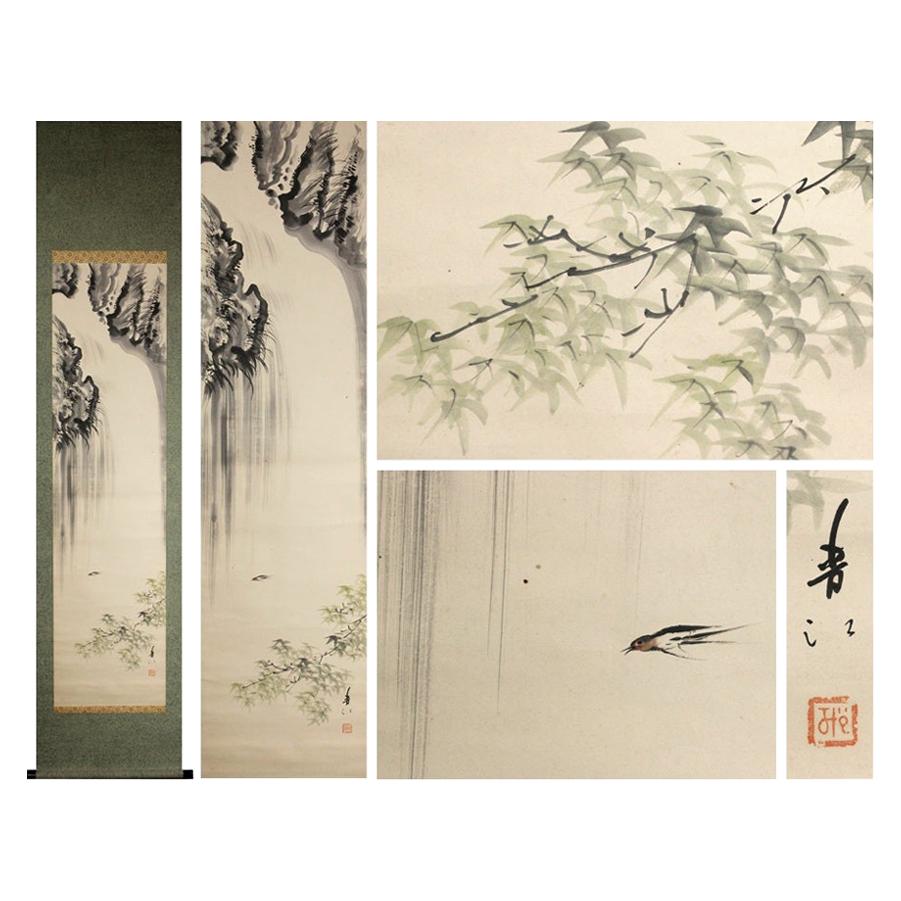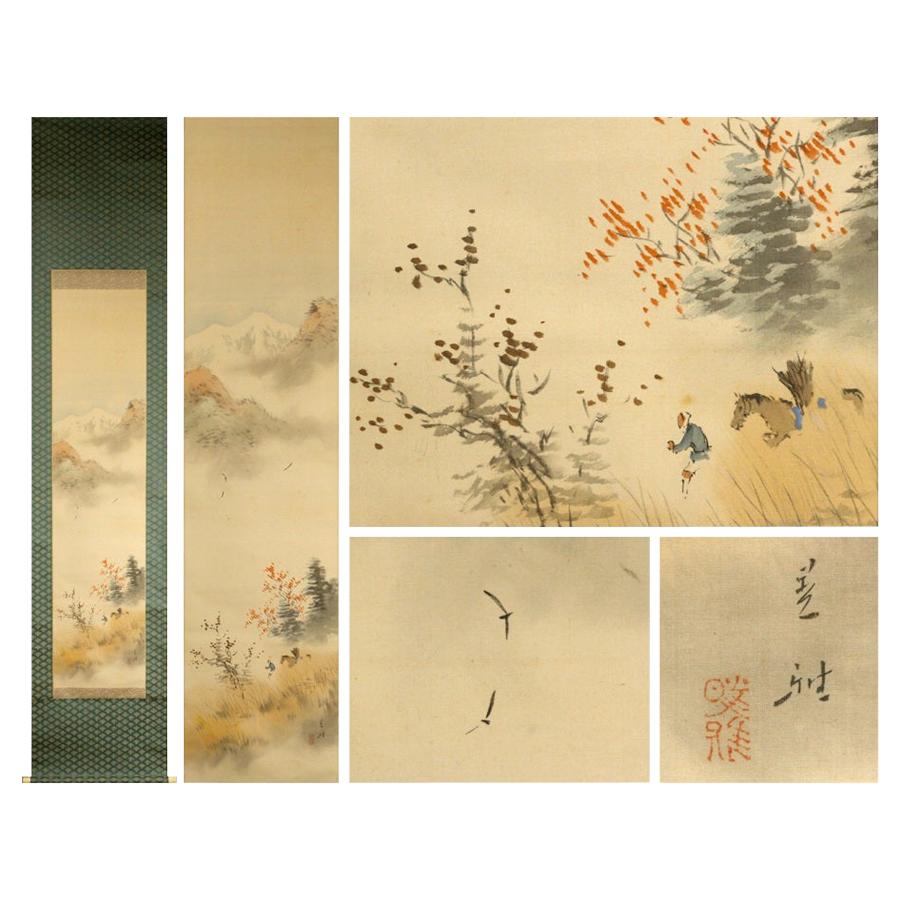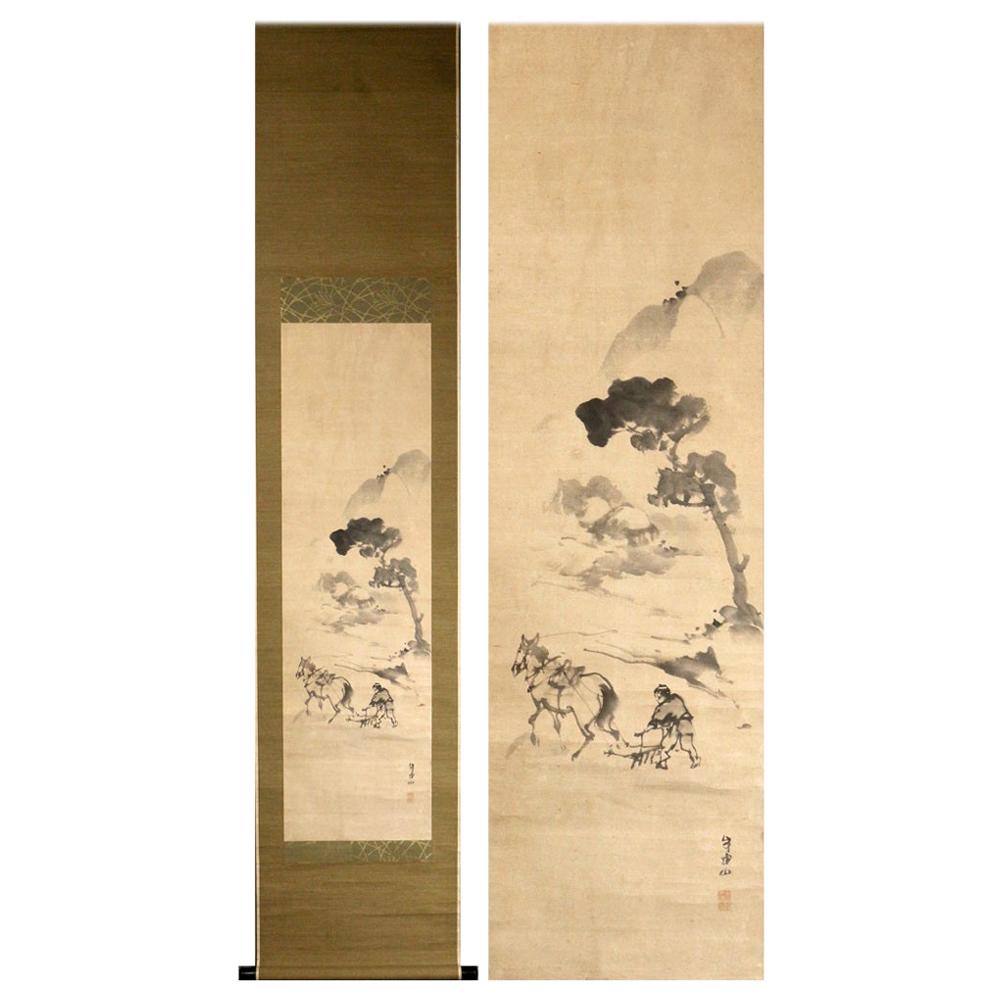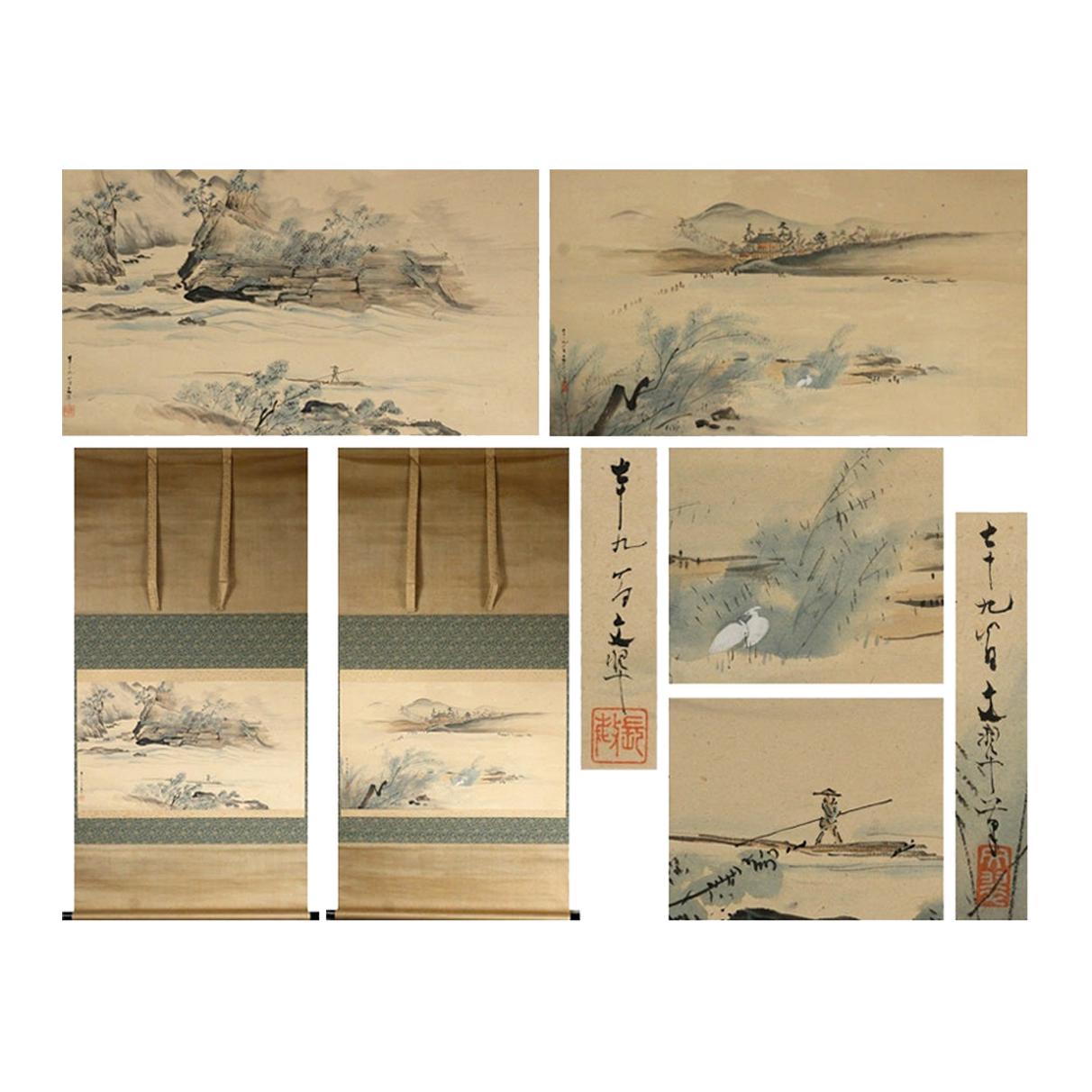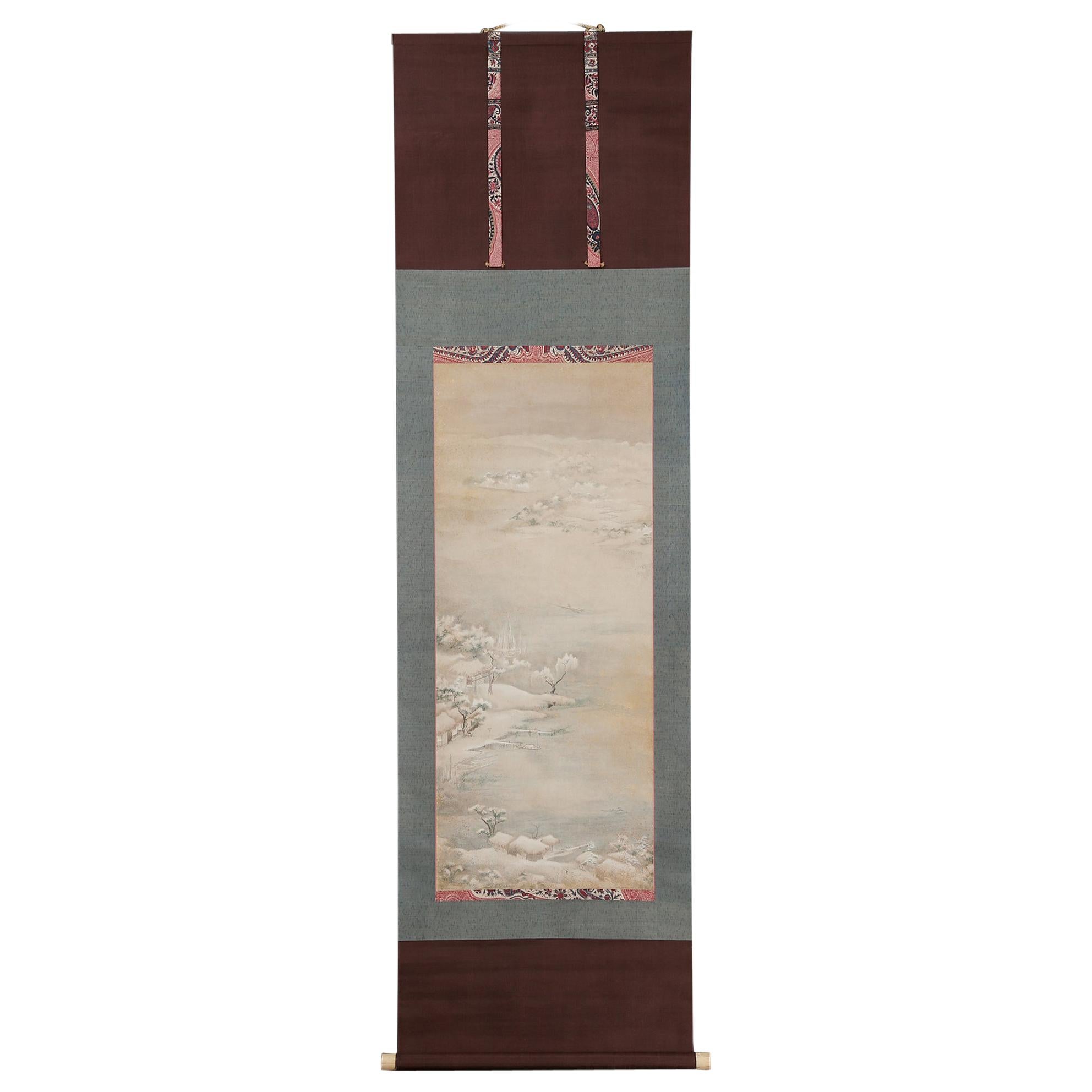Items Similar to 20thc Bird Scene Based Meiji Japan 19c Artist Shiki Masaoka The Poet
Want more images or videos?
Request additional images or videos from the seller
1 of 5
20thc Bird Scene Based Meiji Japan 19c Artist Shiki Masaoka The Poet
About the Item
As you can see, Masaoka Nakata's brush, Shiki Masaoka, "Kakikuba", "Autumn leaves", and a bird-and-flower painting / box.
One of the representative haikus of Shiki Masaoka drawn by Masaoka Nakata
is accompanied by the phrase "Kakikaku wa Kane Nari Horyuji", and the
astringent autumn leaves make the small birds shine well. It is a very tasty work.
«Shiki Masaoka» A
poet and poet. The name is Shiki, and in another issue, the owner of the bookstore, Takenosato, etc.
Dropped out of the University of Tokyo Department of Literature. At first he aspired to politics, but then changed to philosophy and then literature. Aiming for haiku innovation through a new historical consideration of haiku, he then published "Utayomi ni Yofurusho", embarked on tanka innovation, and supported the publication of "Hototogisu" by Kyoshi Takahama and others. He also preaches the need for sketches and publishes excellent essays. Although he lived a long sickbed life by caries, his energetic activities established his position as a modern literature in haiku and tanka. In 1902, he was 34 years old.
"Kaki kueba bell rings and Horyuji Temple"
There are some discolorations in the state era.
¦ Shaft dimensions / approx. 157.0 cm x approx. 33.5 cm.
¦ Paper dimensions / approx. 74.5 cm x approx. 27.0 cm.
¦ Signs / There are inscriptions and seals as you can see.
¦ Box / common box.
- Dimensions:Height: 61.82 in (157 cm)Width: 13.19 in (33.5 cm)Depth: 0.04 in (1 mm)
- Style:Meiji (Of the Period)
- Materials and Techniques:
- Place of Origin:
- Period:
- Date of Manufacture:19th Century
- Condition:Wear consistent with age and use. There are some discolorations in the state era. ■ Shaft dimensions / approx. 157.0 cm x approx. 33.5 cm. ■ Paper dimensions / approx. 74.5 cm x approx. 27.0 cm. ■ Signs / There are inscriptions and seals as you can see. ■ Box / common box.
- Seller Location:Amsterdam, NL
- Reference Number:
About the Seller
5.0
Gold Seller
These expertly vetted sellers are highly rated and consistently exceed customer expectations.
Established in 2015
1stDibs seller since 2019
158 sales on 1stDibs
Typical response time: 11 hours
- ShippingRetrieving quote...Ships From: Amsterdam, Netherlands
- Return PolicyA return for this item may be initiated within 14 days of delivery.
More From This SellerView All
- Waterfall and Bird Scene Meiji Period Scroll Japan 19c Artist MarkedLocated in Amsterdam, Noord HollandAs you can see, this is a Japanese painting by Aoe, which depicts the beautiful "Aoba Takiyanzu" with beautiful fresh greenery. ¦ Paper books and handwriting. ¦ There are some...Category
Antique Mid-19th Century Japanese Meiji Paintings and Screens
MaterialsSilk
- Autumn Scene Meiji Period Scroll Japan 19c Artist Marked Nihonga StyleLocated in Amsterdam, Noord HollandAs you can see, Japanese painting late autumn Akino map / with box. It is a beautiful work that depicts the melancholy scenery of Akino, which is unique to late autumn , and is com...Category
Antique Mid-19th Century Japanese Meiji Paintings and Screens
MaterialsSilk
- Farming Rice Fields Scene Meiji Period Scroll Japan 19c Artist MarkedLocated in Amsterdam, Noord HollandThe simple country side life is the ideal of the Oriental scholar. As you can see, the Kishi Renzan agricultural rice field working painting / box is included. Agricultural rice fields are worked using horses...Category
Antique Mid-19th Century Japanese Meiji Paintings and Screens
MaterialsSilk
- Nihonga Pair Landcape Scene Meiji Period Scroll Japan 19c Artist SakakibaraLocated in Amsterdam, Noord HollandAs you can see, Fumi Sakakibara brush-colored landscape map with double width / box. The light and calm colored landscape drawings applied to each are ...Category
Antique Late 19th Century Japanese Meiji Paintings and Screens
MaterialsSilk
- Hiroshige Scene Meiji Period Scroll Japan 19c Artist Marked Nihonga StyleLocated in Amsterdam, Noord HollandDen Nidai Hiroshige "Edo Suburbs Famous Place Sumida River Upstream Map" paper book watercolor hanging scroll with box Size Axis · · · Length 183cm, width 52.8cm Inside · · · Lengt...Category
Antique Mid-19th Century Japanese Meiji Paintings and Screens
MaterialsSilk
- Lake Awasaru Scene Meiji Period Scroll Japan 19c Artist Marked Nihonga StyleLocated in Amsterdam, Noord HollandAs you can see, it is a Japanese painting "Lake Suwa Asaharu" figure / co-box. It is a "Lake Suwa Asaharu" figure with gentle sunlight, and it is a very tasty work combined with a ...Category
Antique Mid-19th Century Japanese Meiji Paintings and Screens
MaterialsSilk
You May Also Like
- Japanese Meiji Two Panel Screen Song Birds in SakuraLocated in Rio Vista, CAExceptional Japanese Meiji period two-panel screen, circa 1900. Featuring songbirds amid sakura cherry trees and flowering peony. Made in the Nihonga School style on handcrafted mulb...Category
20th Century Japanese Meiji Paintings and Screens
MaterialsBrass
- Japanese Meiji Six Panel Screen Kano School Bird WaterscapeLocated in Rio Vista, CAStunning late 19th century Japanese Meiji period six panel byobu screen featuring a deep blue waterscape with pheasants and ducks. Made in the Kano sch...Category
Antique 19th Century Japanese Meiji Paintings and Screens
MaterialsBrass, Gold Leaf
- Two Japanese Utagawa Hiroshige Woodblock Prints & One Watercolor on Silk 20thCLocated in Big Flats, NYTwo Japanese Utagawa Hiroshige Woodblock Prints & One Watercolor on Silk, Framed, 20thC Measures - 10.5"H x 8.25"W x 1"D (brown) ...Category
20th Century Japanese Paintings and Screens
MaterialsSilk, Paper
- Japanese Silk Fan, Meiji Era JapanLocated in Saverne, Grand EstPrecious silk fan painted with ink and embroidered, decorated with cranes in a lake landscape. The strands are in finely carved bone decorated with peonies. Gold signature on the rev...Category
Antique Late 19th Century Japanese Meiji Paintings and Screens
MaterialsBone, Silk
- Meiji Period Japanese Screen Pair, One Hundred Birds by Hasegawa GyokujunLocated in Kyoto, JPOne hundred birds Hasegawa Gyokujun (1863-1921) Meiji period, circa 1900. Ink, color and gofun on silk. Dimensions of each screen: H. 170 cm x W. 190 cm (67’’ x 75”) Despite the title, well over 100 birds are represented in this pair of two-fold Japanese screens (the title functions figuratively to convey the idea of a large number). The monumental work is rendered with a comprehensive and highly complex composition which is exquisitely executed and meticulously colored. More a celebration of naturalism than the traditional “One Hundred Birds” paintings which originated in China. This was a subject matter known for its auspicious meaning as much as its actual depiction of nature. These paintings generally had a phoenix (occasionally peacocks) placed in the center, and the other birds paying homage to it. In this quintessentially Japanese scene painted by Gyokujun, a couple of long-tailed birds modeled after paradise flycatchers are included; these are traditional auspicious motifs in Oriental bird and flower painting and denote themes such as celebration and enduring generations. In addition there is the playful inclusion of single exotic parrot. Even so, the vast majority of the birds and flowers are native to Japan. Reading the scene from right to left, from spring through to autumn, the overwhelming sense is one of movement and haste. It is almost as if the birds are in a race, with the fleetest leading the way forward. Although these native birds were commonly drawn amongst artists of the Shijo school, rarely were they painted with such drama and dynamism. It is not strictly a depiction of sketched birds whose manner was faithfully handed down through the traditions of the Shijo school. Rather we see Gyokujun seeking and achieving new expressions in the heart of the turbulent Meiji period. Hasegawa Gyokujun (1863-1921) was born in Kyoto. He was the eldest son of Hasegawa Gyokuho, a Shijo school painter who studied under Matsumura Keibun. Gyokujun studied painting under his father and became a prominent member of the Kyoto painti ng world from a young age. In 1891 he established the ‘Young Painters Social Club’ along with Takeuchi Seiho, Miyake Gogyo and Taniguchi Kokyo. Also in 1891 he was selected as a judge of the Great Private Paintings Exhibition along with Takeuchi Seiho, Yamamoto Shunkyo...Category
Antique Early 1900s Japanese Meiji Paintings and Screens
MaterialsSilk, Wood
- Japan Scroll Painting, Meiji PeriodLocated in Pasadena, CAThis is a wonderful example of a Meiji Period screen painting of Japanese Tanuki or racoon dogs in a landscape. The Tanuki is considered to be a mythical creature Japanese culture. T...Category
Antique Late 19th Century Japanese Meiji Paintings and Screens
MaterialsFabric, Paint
Recently Viewed
View AllMore Ways To Browse
Japanese Base
Small Bird
Furniture Based On Birds
Birds Japan
Silk Birds
Silk Bird
Vintage Birds And Flowers
Bell Ring
Bird On Silk
Japanese Bird Painting
Bird Silk Art
Asian Paintings Of Birds
Small Asian Painting
Japanese Brushes
Japanese Brush
Vintage Bird Box
Asian Bird Paintings
Japanese Silk Painting 20th Century
